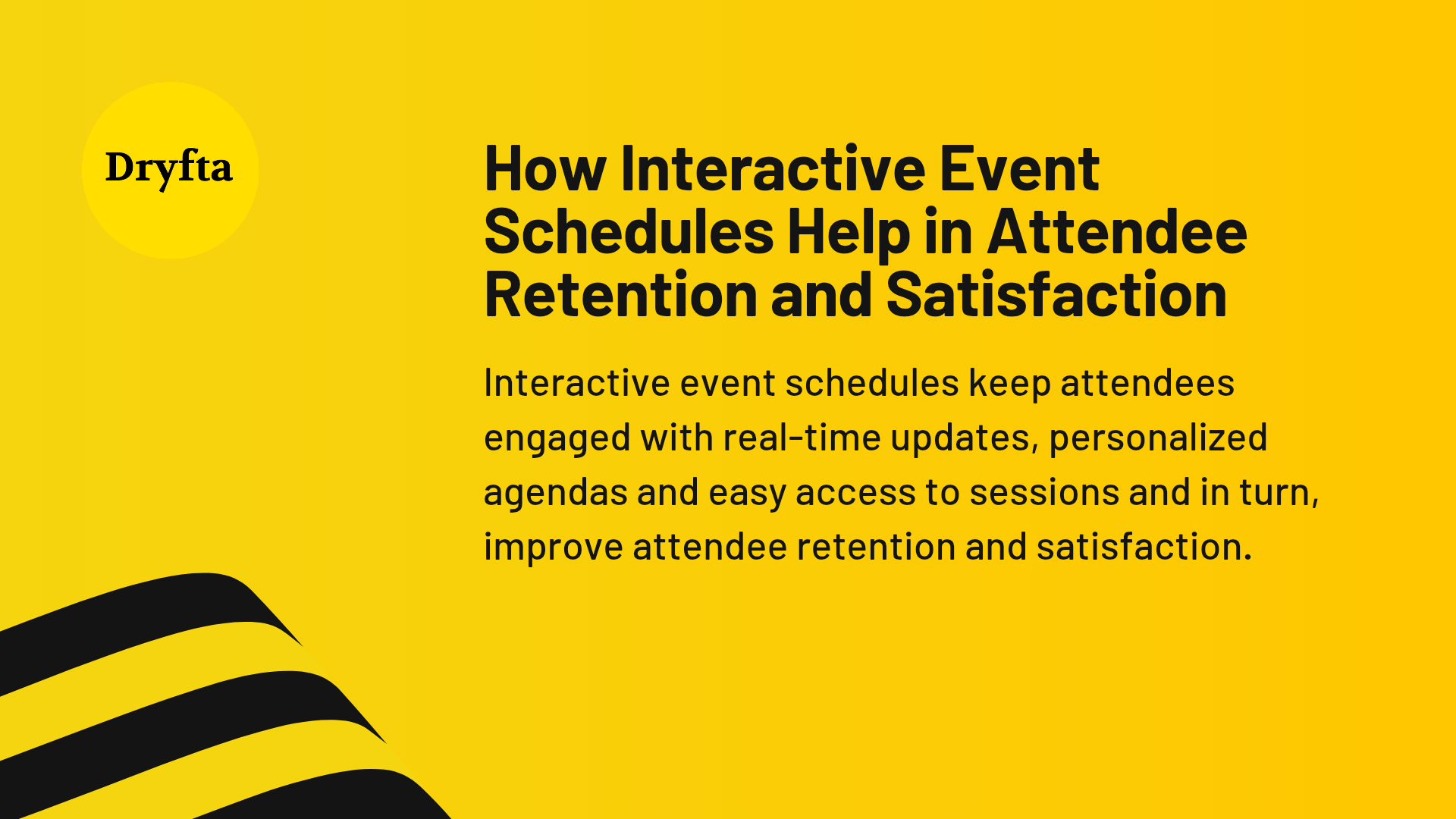
Most present-day conference organizers are surprised at the challenge of keeping attendees engaged and satisfied throughout multi-day events. This is a hurdle that is particularly relevant in reaching out to and sustaining the interest of the present generation today. With shorter attention spans and a multitude of things to juggle daily, it is hardly sufficient for conference planners to simply plan and organize said conferences. Hence, it is now just as important to stand out with interactive event schedules.
On this note, what a gamble it would be to rely entirely on printed programs and static schedules to reach through to an audience that is not easily impressed or satisfied. With plenty of options available and a record-high level of competing event enterprises in most industries than ever, your conference is most likely no longer a niche gathering.
Today, interactive events are what determine the collective attendee experience. There is frustration rising among participants when they have to refer to outdated agendas. When they cannot find sessions that matter to them or when room changes do not reach them just in time, consider a drop in your audience engagement by a substantial margin.
But here’s something clever that I’m sure most event organizers already know deep down: that feeling of confusion and disconnection that attendees experience actually has a solution. It’s called interactive event scheduling. To understand why some conferences inspire fierce loyalty and others struggle to bring people back year after year, conference organizers will benefit from paying attention to their event schedules. The call may perhaps be coming from inside the house. In retrospect, most professionals saw that flaws in their attendee schedule kept pointing back to one simple truth: people need control over their own experience and interactive event schedules give them exactly that.
Conferences thriving in this competitive environment all share common characteristics. They’ve moved beyond paper programs and PDF schedules. They treat scheduling as an experience for attendees rather than a mere announcement. We don’t know when every conference will adopt these tools or if some ever will. But we know that most competent organizers, particularly those reading this blog, will attempt to because attendee satisfaction in the future will demand it.
The Problem Nobody Wants to Name
Traditional event schedules, in print or published as static PDFs, share a fundamental flaw that frustrates everyone involved. They become outdated the moment circumstances change and circumstances are always prone to changing at large-scale conferences. When hosting an international event with speakers from around the world, unforeseen circumstances crop up much more than ever. Speakers may get delayed at airports or have difficulty locating the venue. Technical problems may force you to switch rooms and popular sessions get moved to larger venues to accommodate demand.
Are Interactive Event Schedules the Answer to Your Woes?
As humans, we may be afraid of change, but we can’t deny that change is the only constant. In fact, changes are what fuel the events and conferences, particularly the last-minute ones that we all dread. Interactive event schedules are a little less problematic and much more flexible to work with. They give you the facility to update in real-time when such changes do occur.
When the 2 PM workshop moves locations, that information pushes to everyone’s device immediately. Attendees checking their schedule at 1:55 PM see the correct room and arrive at the right place. This basic reliability creates trust between organizers and attendees that static schedules simply cannot provide.
Personalization That Actually Means Something
Academic conferences, industry trade shows and professional development events typically offer dozens or hundreds of concurrent sessions across multiple tracks. A three-day conference might include 200+ individual sessions, workshops and networking opportunities. No human being can attend everything or even determine which sessions matter most to their specific interests without significant effort.
In this case, static schedules force attendees to manually review almost every session there is to narrow down on one that interests them. They are pushed to highlight possibilities with colored pens and cross-reference their schedules and availability. They build their own personalized agendas using methods that haven’t changed since the 1980s.
This process takes hours of preparation time that busy professionals don’t have. Most attendees arrive at conferences without having thoroughly reviewed options. They make session choices on the fly based on incomplete information. They wander hallways looking for something interesting and settle for sessions that don’t quite match their needs because finding better options requires too much effort.
A Fundamental Dynamic Change
Interactive schedules change this fundamental dynamic by letting attendees stay on top of their schedules before the event even starts. They can search the entire program by keyword as well as filter sessions by topic or track. Attendees can bookmark interesting options and be alerted with warnings when preferred sessions overlap. This personalization happens in minutes rather than hours.
The personalization benefits extend throughout the event itself. Attendees receive reminders about upcoming sessions they bookmarked and get notifications when last-minute schedule changes affect their personal agenda. They can rate sessions immediately after attending, helping them remember which content proved most valuable. It’s like having a personal assistant who actually understands what you need.
Discovery Features That Change Everything
Interactive schedules include discovery features that surface relevant content attendees might otherwise miss. Recommendation engines suggest sessions based on what you’ve bookmarked. ‘Attendees who liked this also attended’ features work like shopping recommendations to expose people to adjacent topics.
Social Features That Build Community
Conferences exist partly to facilitate professional networking and community building. Yet traditional schedules provide zero infrastructure to support these social functions. You might notice interesting people during sessions, but have no way to connect with them afterward. You meet someone during a coffee break, but forget their name and affiliation by lunchtime.
Interactive schedules often include social features that close in on these gaps. Attendee directories let people find others with shared interests or from similar organizations. Meeting schedulers help coordinate one-on-one conversations during breaks. Activity feeds show what sessions people attended, revealing shared interests that spark conversations. These social tools don’t replace face-to-face networking, but they make that networking more likely to happen and more likely to continue after the event ends.
Implementation Without Hassle
The first thing organizers notice when considering interactive schedules is the perceived implementation burden.
Will this require months of work?
Will it break our existing systems?
Will attendees actually use it?
The reality is that modern event management platforms make implementation straightforward. Systems like Dryfta integrate interactive scheduling with registration, abstract management and attendee engagement tools. The schedule populates automatically from your existing program data. Updates made in one place appear everywhere simultaneously.
What Comes Next
The future belongs to conferences that treat scheduling as an interactive service rather than a static document. Those who cling to printed programs will watch their attendance decline as professionals choose events that respect their time.
So we tell anyone who asks about improving attendee satisfaction: start with your schedule. Make it interactive. Make it personal. Make it accurate. Everything else builds on that foundation. The loss is not in having limited resources but in the opportunities that are robbed from attendees when organizers stick with outdated approaches. For now, all we can see is the choice each conference faces: adapt or accept decline.
If you’re willing to invest in satisfaction that drives retention, Dryfta’s integrated event management platform may interest you. Our system handles everything from registration to mobile apps within one unified platform. Sign up for a quick demonstration today, completely free of cost, to see how features like interactive scheduling can make your upcoming conference the talk of the town.




